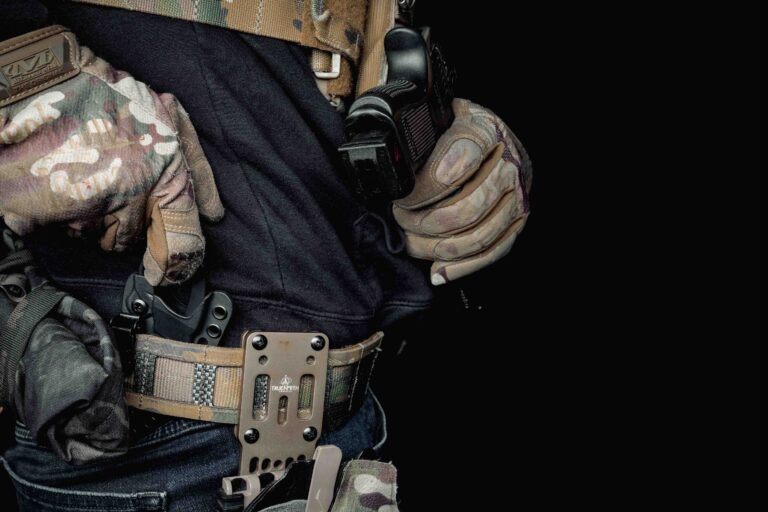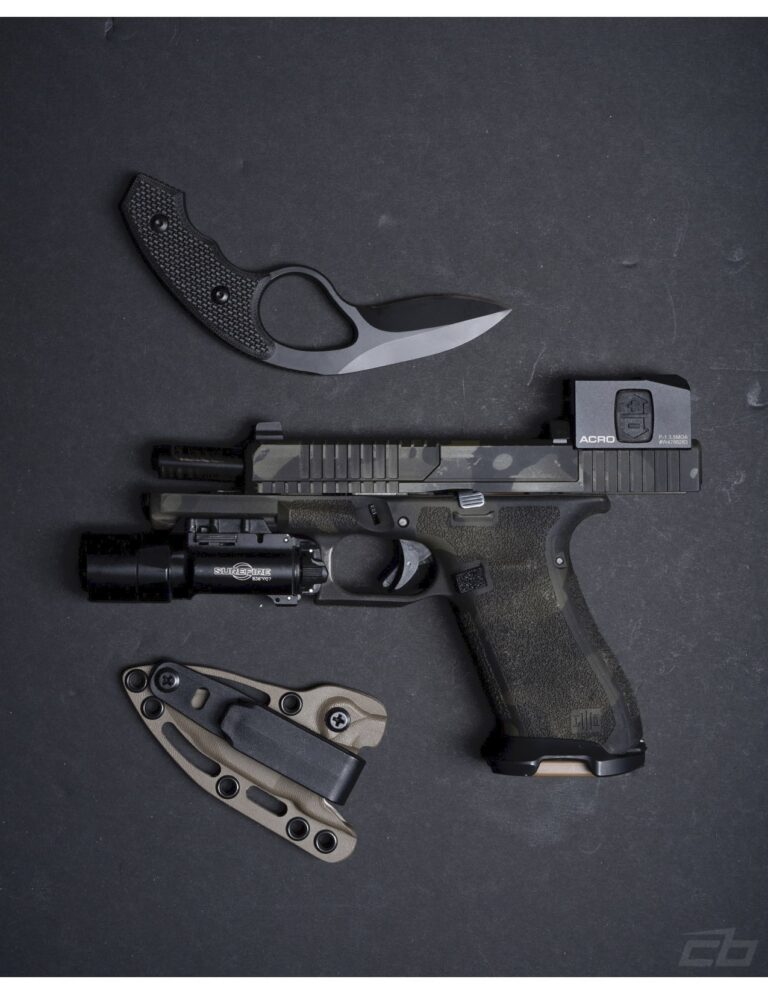The dirk knife holds a significant place in history as a symbol of heritage, warfare, and craftsmanship. Originating from Scotland, this long-bladed dagger has been associated with Scottish Highlanders and has evolved over centuries. This article delves into what a dirk knife is, its historical context, design features, and its role in modern times.
What Is a Dirk Knife?
A dirk knife is a long-bladed thrusting dagger traditionally used in Scotland. Characterized by its single-edged blade, which can range from 10 to 14 inches in length, the dirk knife was an essential sidearm for Scottish Highland warriors. The blade is designed primarily for stabbing but can also be used for slashing due to its sharp edge.
Historical Background
Origins in Scottish Culture
The dirk knife traces its roots back to the early 17th century in the Scottish Highlands. It evolved from the medieval ballock dagger and became a distinctive part of the Highland dress. Worn alongside the claymore (a large two-handed sword) and the targe (a round shield), the dirk knife was an indispensable weapon for close combat.
Role in Warfare
During the Jacobite uprisings of the 17th and 18th centuries, Scottish warriors relied heavily on their dirk knives. The dagger was not only a weapon but also a tool for daily tasks such as cutting food and performing ceremonial duties. The dirk knife symbolized bravery and martial prowess, often passed down through generations as a family heirloom.
Design Features of Dirk Knives
Blade Characteristics
Length: Typically between 10 to 14 inches.
Edge: Single-edged with a sharp point, optimized for thrusting.
Shape: Straight blade with a thick spine for added strength.
Handle Design
Materials: Traditionally made from hardwood, bog oak, or horn.
Carvings: Often intricately carved with Celtic knotwork or clan symbols.
Pommel: May feature a pommel cap made of metal, sometimes adorned with gemstones or clan crests.
Scabbard
Construction: Made from leather or wood, sometimes covered with ornamental metalwork.
Accessories: The scabbard often included small knives or tools known as the knife and fork set, used for utility purposes.
Cultural Significance
Symbol of Heritage
The dirk knife is more than just a weapon; it represents Scottish heritage and identity. It is an integral part of the traditional Highland dress, worn during ceremonies, weddings, and cultural events. The dirk symbolizes honor, courage, and the warrior spirit of the Scottish people.
Ceremonial Use
In modern times, the dirk knife is primarily used for ceremonial purposes. It is a key component of the military dress uniform for Scottish regiments in the British Army and other military organizations worldwide. The ceremonial dirk is often elaborately decorated, reflecting the prestige of the wearer.
Dirk Knives in Modern Times
Collectibles and Replicas
Dirk knives have become popular among collectors and history enthusiasts. High-quality replicas are crafted to mimic historical designs, appealing to those interested in Scottish culture and weaponry. Collectors often seek dirks with authentic materials and traditional craftsmanship.
Use in Martial Arts
Some martial arts schools incorporate the dirk knife into their training, focusing on historical European martial arts (HEMA). Practitioners study traditional fighting techniques, emphasizing the dirk’s role in close combat scenarios.
Legal Considerations
Owning and carrying a dirk knife may be subject to legal restrictions depending on the country or state. In some jurisdictions, dirk knives are classified under concealed weapons laws or blade length regulations. It’s essential to understand local laws before purchasing or carrying a dirk knife.
Craftsmanship and Materials
Traditional Crafting Techniques
Crafting a dirk knife involves skilled artisanship. Historically, blacksmiths forged the blade by hand, ensuring durability and functionality. The handle and scabbard were crafted by woodworkers and leatherworkers, often personalized to reflect the owner’s clan or status.
Modern Materials
Contemporary dirk knives may incorporate modern materials such as stainless steel for the blade and synthetic materials for the handle. While these materials enhance durability and ease of maintenance, some purists prefer traditional materials for authenticity.
Distinguishing Dirk Knives from Similar Weapons
Dirk Knife vs. Sgian Dubh
Dirk Knife: Larger dagger worn on the belt, primarily for combat.
Sgian Dubh: Smaller knife worn tucked into the sock or boot, used as a utility tool.
Dirk Knife vs. Dagger
While all dirks are daggers, not all daggers are dirks. The dirk knife is specific to Scottish heritage, with unique design elements and cultural significance. Daggers, in general, are double-edged blades used worldwide in various forms.
Notable Historical Dirk Knives
The Black Watch Dirk
Associated with the Royal Highland Regiment, known as the Black Watch, this dirk features specific regimental insignia and is part of the formal dress uniform. It symbolizes the regiment’s storied history and traditions.
Clan-Specific Dirks
Many Scottish clans had their own distinctive dirk designs, incorporating clan symbols, mottos, and tartan patterns. These dirks served as personal identifiers and were treasured family possessions.
Care and Maintenance
Preserving Antique Dirk Knives
Cleaning: Gently clean the blade with a soft cloth to remove dust and prevent corrosion.
Oil Application: Use light oil to protect the metal parts from rust.
Handle Care: Preserve wooden or horn handles with appropriate conditioners to prevent drying and cracking.
Storage: Keep the dirk in a dry environment, preferably in a display case or protective sheath.
Maintaining Modern Replicas
Regular Cleaning: After use, clean the blade to remove fingerprints and moisture.
Sharpening: Use proper sharpening tools to maintain the edge if the dirk is used for practical purposes.
Safety: Handle with care due to the sharpness and potential legal considerations.
The dirk knife is a remarkable artifact that embodies the rich history and culture of Scotland. From its origins as a warrior’s weapon to its role in modern ceremonial dress, the dirk knife continues to captivate interest for its historical significance and distinctive design. Understanding what a dirk knife is provides insight into its impact on heritage, martial traditions, and craftsmanship.
Whether you are a collector, history enthusiast, or someone interested in edged weapons, the dirk knife offers a fascinating glimpse into a bygone era. Appreciating its artistry and cultural importance ensures that the legacy of the dirk knife endures for future generations.
Frequently Asked Questions
What is a dirk knife used for today?
Today, dirk knives are primarily used for ceremonial purposes, particularly in Scottish cultural events and military dress uniforms. They are also collected as historical artifacts and replicas by enthusiasts interested in Scottish heritage and traditional weaponry.
Are dirk knives legal to own and carry?
The legality of owning and carrying a dirk knife varies by country and region. In some places, dirk knives are classified as weapons and may be subject to restrictions or prohibitions on carrying them in public. It’s essential to check local laws and regulations before purchasing or carrying a dirk knife.
How does a dirk knife differ from other daggers?
A dirk knife is specific to Scottish culture, featuring a single-edged blade designed for thrusting and slashing. Its design often includes ornate handles and scabbards with cultural symbols. Other daggers may have double-edged blades and different design elements, reflecting various cultural backgrounds and purposes.
Can dirk knives be used for practical purposes?
While historically used as weapons and tools, modern dirk knives are typically not used for practical purposes. They are mainly ceremonial or collectible items. If used, they should be handled carefully, considering their size and potential legal implications.
Where can I purchase a dirk knife?
Dirk knives can be purchased from specialty retailers that focus on historical weapons, Scottish cultural items, or martial arts equipment. They are also available through custom knife makers who craft replicas or original designs. Always ensure that purchasing a dirk knife complies with local laws and regulations.
What materials are commonly used in making dirk knives?
Traditional dirk knives feature blades made from carbon steel, handles from hardwood, bog oak, or horn, and scabbards from leather or wood. Modern replicas may use stainless steel blades and synthetic materials for handles and scabbards to enhance durability and ease of maintenance.
How should I display a dirk knife safely?
Dirk knives can be displayed in a secure display case or mounted on a wall plaque. Ensure that the knife is firmly secured and out of reach of children. Displaying the dirk with its scabbard adds to its aesthetic appeal and protects the blade.
What is the historical significance of the dirk knife in Scottish military units?
The dirk knife is a traditional component of the dress uniform for Scottish regiments, symbolizing bravery and the warrior heritage of the Scottish Highlands. It serves as a ceremonial piece that honors the history and traditions of the military units.
Is there training available for using a dirk knife in martial arts?
Some martial arts schools that focus on historical European martial arts (HEMA) offer training in using weapons like the dirk knife. Training emphasizes historical techniques, safety, and proper handling. Interested individuals should seek reputable instructors experienced in this specialized field.
What should I consider when buying an antique dirk knife?
When purchasing an antique dirk knife, consider factors such as authenticity, condition, provenance, and legality. It’s advisable to consult with experts or appraisers to verify the item’s history and value. Ensure compliance with laws regarding the ownership and import/export of antique weapons.


